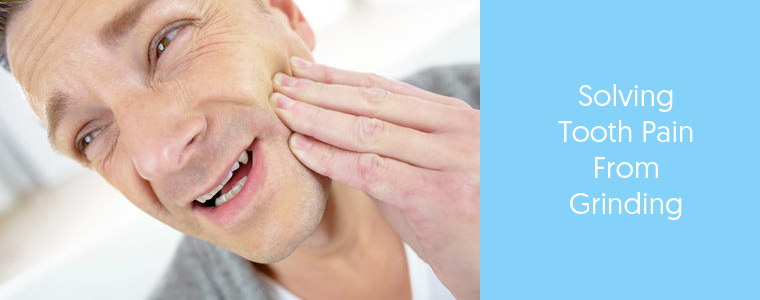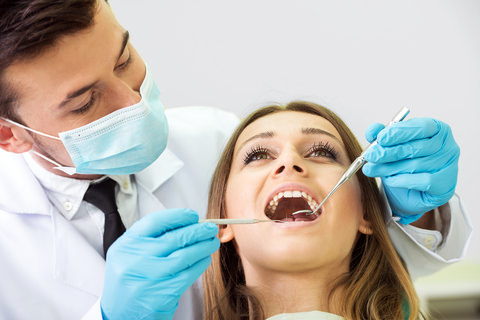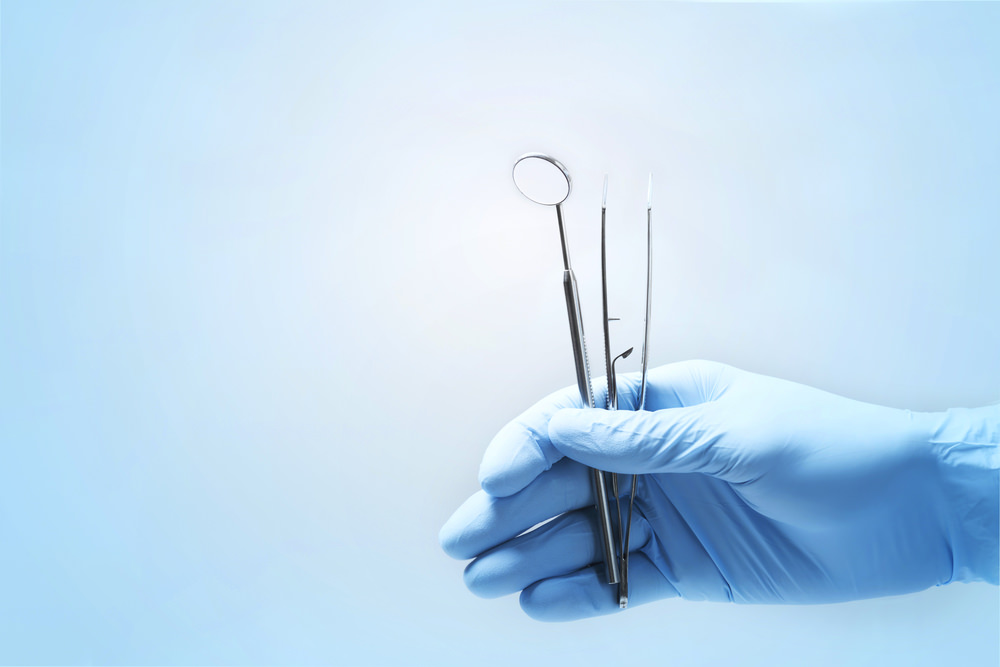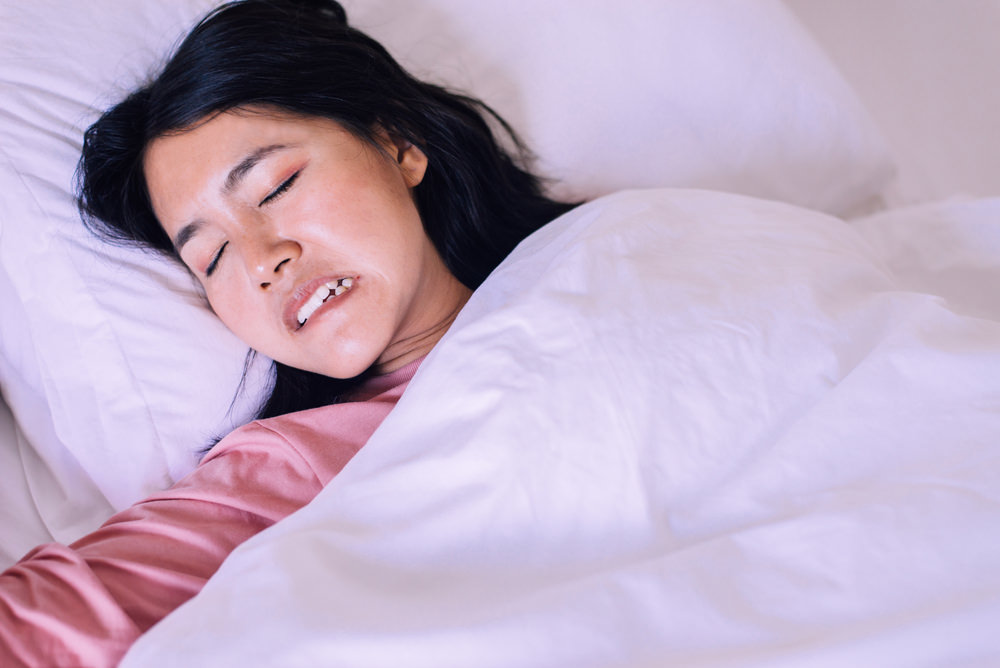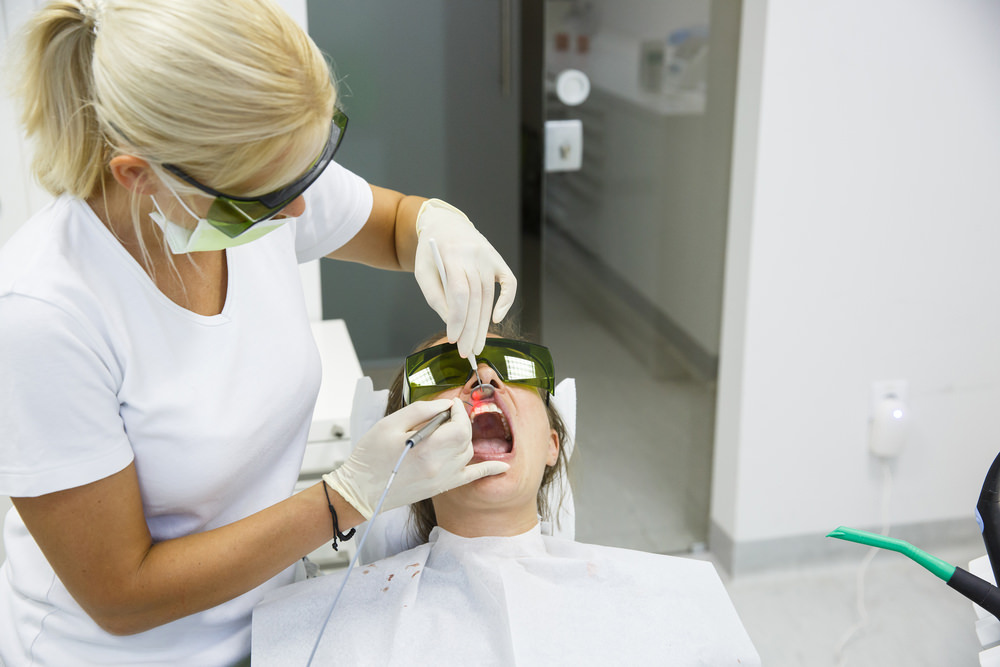Do You Experience Tooth Pain from Grinding?
Grinding your teeth can cause pain in the ligament and nerve of your tooth, which is located between the jawbone and the tooth.
Do you experience tooth pain from grinding your teeth?
Grinding causes bruising, and every time it happens it’s like you are hitting the spot repeatedly. Picture hitting a bruise on your arm, over and over – the same thing with your teeth.
So whether it’s caused by misaligned teeth, a narrow airway or simply lifestyle factors such as stress or anxiety, fixing tooth pain from grinding may be easier than you realise.
Here, we teach you how to recognise the causes and symptoms, and what you can do to solve them.
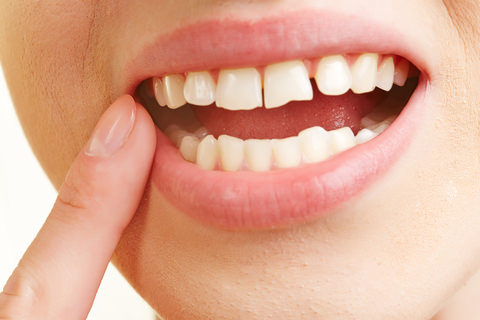
Grinding your teeth can cause pain around your teeth and gums
What is Tooth Grinding?
Grinding, otherwise known as bruxism, is the involuntary clenching of your jaw and grinding of your teeth, which can lead to tooth pain.
You may grind your teeth whilst you are awake and concentrating, under stress or suffering from anxiety, but more than often it happens whilst you are asleep.
As a result, you may not realise you are grinding your teeth, but your partner may notice from hearing the noise. Parents also often notice it in their sleeping children.
How Will Your Dentist Notice and Diagnose if you have an Issue with Tooth Pain From Grinding?
Generally, the issue is that not all of your teeth will be in alignment.
You will normally find that you will be grinding more on one or two teeth than any of the others.
Therefore, you will find that you will have very strong sensitivity on that tooth because that is gaining the majority of the pressure when you are grinding.
Your dentist will assess your bite – from doing so, they will be able to see where you are biting harder and hitting your tooth because that area will have a lot of bruising of both the ligaments and nerves that come into your tooth (located in-between your jawbone and your tooth).
The procedure is the same for natural teeth, or those who have had crowns, or any form of dental work performed previously.
Your dentist will take a special form of carbon copy paper and see exactly where the sensitive area, or the contact points between the teeth and the bottom jaw, are hitting – most of the time what they will notice is the contact points are too high.
This is noticeable when there are more marks on one side of the carbon copy paper – more marks on one side means that there is more hitting in this area.
What are the Main Causes of Tooth Pain from Grinding?
Stress is one of the main causes of teeth grinding, and it can happen in a deep sleep.
In a deep sleep, there are two muscles that you are able to move, one being your eyes, and the other being your lateral pterygoid – this is the muscle that moves your bottom jaw.

Grinding your teeth can occur as you sleep
Your eyes are an extension of your brain, and in a deep sleep you are dreaming, so your brain is moving, therefore your eyes are moving.
The lateral pterygoid also moves just in case your airway blocks – this is a form of the body’s survival mechanism.
If you are grinding your dentist should see if you are snoring and also assess your airway – you may be grinding trying to move the bottom jaw trying to get more air into your airway during your sleep.
Seen in adults, but something that should be investigated if noticed in children – a snoring child who grinds their teeth may have a very narrow airway and is just not getting enough air during their sleep.
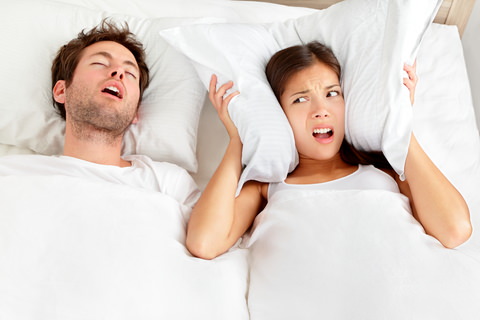
If you are snoring, your dentist may need to assess your airway
Grinding is the bodies involuntary mechanism to try and get more air down their throat.
Other causes can be lifestyle factors such as smoking, caffeine, alcohol and some drugs.
7 Main Symptoms of Tooth Pain from Grinding
- Headaches – if your bottom jaw is in the wrong position, or the tip of your bottom jaw (condyle) and skull, then your teeth are in the wrong position and that joint is in the wrong position. This will cause headaches from compression of your nerves, muscles getting into stress into your trigger points, and tension of all your neck and shoulders.
- Grinding sounds whilst sleeping – this may be noticed by your partner, with whom you share a bed, or the parents of sleeping children.
- Tooth pain – Especially upon waking up, from all that grinding.
- Sore jaw muscles whilst chewing – Especially during breakfast, from grinding whilst asleep.
- Clenching your jaw when angry, anxious or concentrating – As these are all common symptoms of stress.
- Sensitivity – Teeth becoming more sensitive to hot and cold temperatures.
- Fractured tooth enamel – Enamel wears away when you grind.
What are the Solutions for Tooth Pain from Grinding?
If your dentist notices that the contact points are too high from a filling or a crown, they can simply remove the excess height.
If the grinding is a result of your natural teeth not being in alignment, however, the procedure is a little more complicated.
A model and assessment of your bite is required – this involves taking impressions of both your top and bottom jaw. This will show them which tooth is too high.
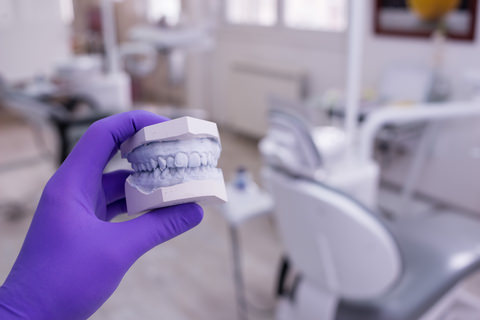
A model of a patients teeth
Braces can then be fitted to straighten your natural teeth, which in time will put the teeth back into alignment, stopping them from hitting any contact points between the teeth and the bottom jaw.
If you cannot afford braces, another solution is white fillings – a composite that sticks to your natural teeth.
This is put on your teeth to make them all at the same level, building your teeth up rather than removing any tooth structure, and allowing your bite structure to become even.
Please note that composite does not stick to crowns, only to natural teeth so your dentist will choose either option – removing the excess height from the crown, or adding additional height to the natural teeth.
If the problems are caused by an issue with your airway, your dentist will really need to investigate your airway itself, and whether your bottom jaw is in the wrong position.
If so, this will mean the left and right-side muscles are not symmetrical.
The muscles will be working overtime trying to get symmetrical and moving your bottom jaw around. Further work can be performed from here to get these muscles back into alignment.
What to do if you can’t get to the Dentist straight away?
It is important to see a Dentist straight away once noticing grinding, as if left untreated, it can lead to further problems such as damage to crowns, fillings, the wearing away of tooth enamel, and increased risk of infection or decay of your natural teeth.
However, if unable to get to a Dentist immediately, there are some factors you can try at home to try and relieve some pain. These include;
• Panadol
• Watch your bite whilst eating – try to ensure you have a soft bite, not putting any pressure on the area, which helps let your body heal itself naturally
• Stress management therapy
• Relaxation techniques including meditation
Will the Pain Reduce by itself after Grinding?
You often hear the statement – “Don’t worry about it, give it some time and it will just go away by itself”.
Is this true with tooth pain from grinding, or is having some composite or cosmetic work performed your only solution?
It is still suggested you get yourself to the dentist as soon as possible so they can investigate where the pain is coming from.
If they can see a skeletal discrepancy arising from the bottom jaw not being centred to the top jaw, they will try and fix that by applying composites and redirecting the position of the bottom jaw.
However, if you choose not to get these composites fitted, over time, the body will try and remodel itself.
A downfall of this, apart from the time it takes, is that the body also compensates for any discrepancies – it is like, for example, having a short leg.
The problem (being the short leg) will not disappear, but instead, the other leg can be worn down until both reach the same height.
Therefore, you may find your tooth pain from grinding slowly reducing over time without any work being performed by a dentist, but your aesthetic balance may be out of alignment.
Conclusion
Tooth pain from grinding can be a very irritating factor – just like a bruise that does not want to go away, it can be quite painful.
However, once you recognise the symptoms – clenching your jaw, grinding sounds whilst asleep, headaches, and sore jaw muscles just to name a few – being assessed by a dentist for one of the few causes and receiving a diagnosis is quite quick and easy.
Your dentist will then attempt to put your teeth back into alignment, ensuring that you no longer clench that jaw, grind those teeth, and bruise those ligaments and nerves, and all in all, make your life much less painful.
Believe me, when I say, it’s well worth the visit.
Do you have any of the 7 symptoms of teeth grinding?
By Anthony Cade
Created at May 20, 2019, Updated at January 25, 2025


